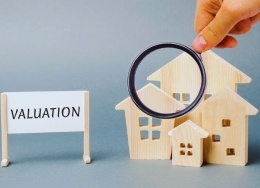5 min read
2 min read
Selling your investment property? Watch out for tax
Coleman Financial Group 12/10/24 8:00 AM

If you are considering disposing of a property, it’s important to understand the implications so that there are no surprises when your tax bill arrives.
As with most investment assets, when you dispose of an investment property generally you are liable for capital gains tax. Capital gains tax (CGT) is levied when you make a profit on selling and is part of your income tax, rather than a separate tax.i
When you dispose of an investment asset, your capital gains and losses must be reported in your tax return. The capital gain or loss is the difference between what it cost you to obtain and improve the property (the cost base) and the amount you receive when you dispose of it.ii
The CGT event is triggered when you enter into the sales contract, not when you settle on the property.
Capital gains must be included in your tax return for the income year the property is sold, while capital losses can be carried forward and used in future years.iii
Under the 6-year rule, you may be entitled to a part or full main residence exemption if you lived in the investment property before renting it out. This rule allows you to continue treating a property as your main residence for up to six years if you use it to produce income.iv
Other taxes to check before selling
In most situations, you are not required to add goods and services tax (GST) to the sale price when selling an investment property.
GST does, however, need to be applied to the sale of newly built and redeveloped properties. This may apply even if you are not a business.v
In some states (such as NSW), land tax is levied on investment properties over a certain value, so it’s important to ensure you pay any land tax bills prior to selling.
How CGT works
When it comes to CGT, you pay tax on your net capital gains, which is your total capital gains less any capital losses less any discount you are entitled to on your gains.vi
An important factor in the CGT calculation is when you purchased the investment property and how long you have held it.
If you sell within the first year of ownership, 100 per cent of your capital gain will be subject to CGT. If you sell after 12 months only 50 per cent is subject to CGT. For example, if you sell your property two months after purchase and make a capital gain of $10,000, the entire $10,000 is subject to CGT, but if it’s sold after the first year, only $5,000 is subject to CGT.
Property acquired before 20 September 1985 is exempt from CGT as this was the introduction date for CGT.
Calculating your capital gain or loss
Correctly calculating your capital gain or loss requires you to identify all the legitimate expenses contributing to your property’s cost base.
This usually includes items such as the price paid for the property, costs of transfer, stamp duty and selling costs (such as advertising, accounting and agent’s fees).
You can also include the cost of owning the CGT asset (such as rates, land taxes and insurance premiums), but you are not permitted to include amounts already claimed as a deduction (such as depreciation and capital works).
If you acquired your property before 21 September 1999, you can index its cost base for inflation to reduce your capital gain.vii
For more information about the tax implications of selling your investment property, call our office today.
i What is capital gains tax? | Australian Taxation Office (ato.gov.au)
ii Cost base of assets | Australian Taxation Office (ato.gov.au)
iii CGT when selling your rental property | Australian Taxation Office (ato.gov.au)
iv Treating former home as main residence | Australian Taxation Office (ato.gov.au)
v GST and property | Australian Taxation Office (ato.gov.au)
vi Calculating your CGT | Australian Taxation Office (ato.gov.au)
vii Indexing the cost base | Australian Taxation Office (ato.gov.au)
Call us to today!
 Read More
Read More
 Read More
Read More


